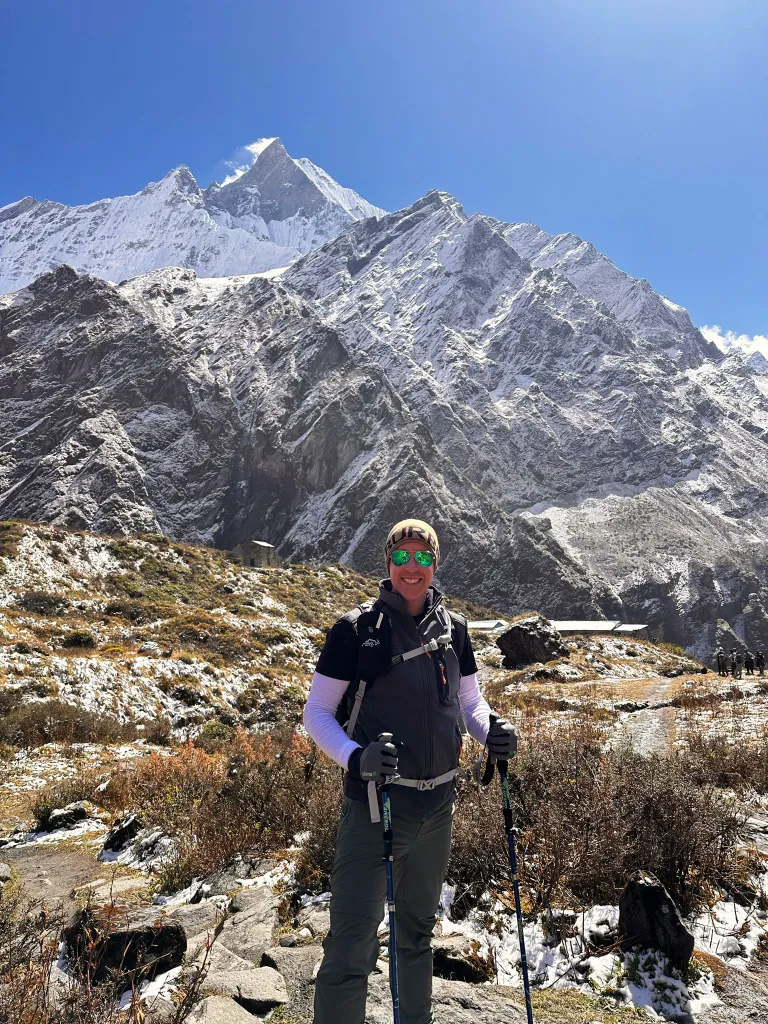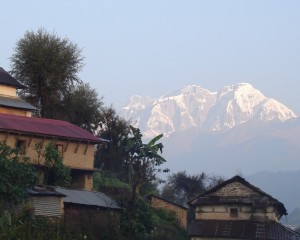Can you trek in Nepal without a guide?
Trekking in Nepal without a guide is totally possible if you are ready to take all the precautions and safety measures. You must be well prepared for every contingency and make sure that you know exactly where you are going. Trekking alone means carrying all the necessary equipment by yourself.
Some of the famed trekking destinations like Everest, Annapurna, and Langtang have full facilities of the best lodges, teahouses, and guest houses all along the paths. Also, the paths are well-marked and simple to follow. You can easily trek without a guide in these areas. Trekking in Nepal can be completed by two methods, both methods carrying some advantages and disadvantages.

Some exceptional areas like Dolpo, Mustang, Humla, and a few others, are among isolated and perilous than the rest of the places which doesn't call for trekking alone. It is preferable to stick to hiking trails that are much more popular, or that have numerous teahouses along their entire route. This is done mainly for safety reasons. Trekking alone has many advantages affordable, simple, and a lot of fun.
Life on an independent trek
You can trek alone without any guide or with any guide also. An organized trek, consisting of you, a guide, and a porter, or it could also be a porter guide, can be a suitable trek for you if you are a novice to the mountains of Nepal. Trekking alone gives you the main advantages to the stay in teahouses or homestays. Also, a fully organized trek gives you opportunities in exploring chances camping, choose where to spend the night, and avoid crowded lodges.
The planned trek guarantees safety. To make the trek successful, your tour leader and porters must be familiar with the routes or any other potential issues. Taking porters gives you the pros of walking easily as you’ll not be carrying the bag. A wider variety of cuisine and access to a cultural and linguistic interpreter are additional benefits.
If you choose the independent trek, you don't have to always go camping. You can find the atmospheric homestays, even on isolated routes. Places like Kanchenjunga and Upper Mustangs have plenty of homestays and lodges. Individual trekkers should rely on lodges which makes them unable to visit vast areas of highland Nepal.

An Independent trek doesn't make a controlled timetable, which is a very important factor for a memorable trek. If you joined an assembled trek, you’ll have less opportunity to interact with locals and get bounded by a timezone leading you to not explore more.
Nepal trekking permits and paperwork
If you are trekking to Nepal, you must know that TIMS cards are required for all trekkers. You can get the permit from the Nepal Tourism Board Office which is located in Pokhara or Kathmandu. Bring two passport-sized pictures and a copy of your passport for taking the permit card. You should also provide your trekking route, entry and exit points, and emergency contact details.
Group trekkers pay R 1,000 per person, whereas free individual permits cost R 2,000 per trekking route. Every hike in Nepal will call for a specific number of licenses and other forms of documentation. You must obtain a TIMS (Trekkers Information Management System) Card before beginning any trek.
Staying healthy on a Nepal trek
With the exception of weather and altitude-related issues, trekking in the highlands of Nepal generally consists of very few health risks. There are fewer cases of food poisoning and other digestive issues during the treks. However, you must be mindful of the food you consume there. The last thing you want to do is start moving about while feeling queasy. It's crucial to be conscious of issues caused by altitude, as well as those brought on by becoming too cold or overheating.
Fitness and preparation
On the majority of the common trails, only a moderate level of fitness is necessary, especially in the places that are open for independent trekkers. Despite this, you are recommended to avoid undertaking anything too arduous, challenging, or far-flung if it's your first trek. For those who lack fitness, shorter and gentler hikes are recommended. Beginners should set out at first light to make the most of the day's light.

AMS, or Acute Mountain Sickness
Altitude sickness, often known as acute mountain sickness, is the greatest danger on Nepal's higher routes (over 3,000m). This potentially lethal illness is brought on by the body's reaction to both decreased oxygen levels and lower atmospheric pressure.
Moderate to severe altitude sickness is likely to be present but if symptoms worsen or continue, particularly if you start to vomit and have a severe headache, you must take some actions. Even if it's the middle of the night, the best course of action is to quickly descend to a lower elevation. It could be necessary to hire a porter to help the victim descend the mountain quickly. Ignoring AMS can soon result in serious issues, even death.
Hypothermia
It is undoubtedly a problem for those who go on unprepared and improperly clad trips. The indications and symptoms are quite similar to those of AMS, with slurred speech, lack of focus, and weariness being the main ones. To cure this, place the sufferer somewhere warm, give them hot beverages and food, and if necessary, use your body heat to warm them up as you wrap them in sleeping bags.
Heatstroke
While you are trekking through the hotter, lower valleys and hills all day in the sunlight, heat stroke and sunstroke are very common. Try to rest in the shade during these times, drink plenty of water, eat something salty, and put on a wide-brimmed hat.

Water and sanitation
A cardinal rule in Nepal is, “Never to consume tap water without first treating itâ€. Most hikers bring water purification tablets in packets to treat their drinking water. Lodges in the Annapurna region have featured giving pre-treated water to fill in the water bottles.
Also, you won't have many opportunities to wash while hiking. You might get opportunities to take a hot shower occasionally but most travelers choose to wait until they return from the trek.
Nepal trekking packing list
While packing for the trek to Nepal, you must keep in mind to keep things simple and light. Any extra weight you carry during the trek will be regrettable when you struggle to reach the mountains pass. You can look below for the list to pack before going on the trek:
Conclusion
Hence, you can trek alone without a guide in Nepal if you consider all the needed precautions and details. Trekking in remote areas needs some extra knowledge to be safe which can lead you to a successful and memorable trek with Nepal Vision Treks.
FAQs
- Who is More Suitable for Independent Trekking in Nepal?
A physically active person with little knowledge about the directions and maps can go for independent trekking in Nepal. The maps for multiple destinations are easily available which can help you go for independent trekking.
- Which trek should I Choose for the Solo Trek?
Among the multiple choices, you must choose one of the destinations which are frequently traveled. Places like Annapurna Base Camp, Mardi Himal Trek, Ghorepani Poon Hill Trek, and some other treks can be chosen. These are some of the easiest treks that will have visitors both ways.
- How to Prepare for Trekking without a Guide in Nepal?
You won't need a guide to trek in Nepal if you have good research. Prior research about the place through the blogs, videos, and itineraries you find on the Internet can be much helpful. Besides, you can take some trekking agencies willing to help you.
- Will I require a visa to trek to Nepal?
Many nationalities can easily obtain visas on the arrival at the mainland through crossings. With certain payments, you can totally get the visa or you can also apply online which might help you wait less in Kathmandu.
- How costly is trekking in Nepal?
Different treks cost different as per your services throughout the trek. Extra costs like $10 to $25 USD per day for porters, while guides may cost you $30 to $40 USD.
- How do I prepare for the Himalayan treks?
Prior physical activities are needed to make the further approach easier for the trek. The greatest approach you have to take is to go for walks, exercise, and stay active prior to your trek. This will help your body become accustomed to climbing hills. Since endurance is more crucial than speed, practice covering lengthy distances at a rate that feels comfortable for you.
- Are wifi and the internet available in trekking places?
Nearly all hotels in Kathmandu, Pokhara, and other larger towns have free wifi but it's hard to find the service in Himalayan areas. An increasing number of trekking lodges have now started providing wifi on more well-traveled paths. Places like Namche Bazaar, Jomsom, and Manang easily provide internet access.
- How can I receive cash in Nepal? OR Which ATMs would take my card?
Larger banks will exchange currency but most of the banks and ATMs accept foreign cards by taking some extra charges. Nevertheless, it's a good idea to carry some emergency cash in US dollars or euros. Once on the mountain trails, finding money is more difficult. Some lodge owners may exchange dollars or euros.
- Will my cell phone function in Nepal?
Cell phones are almost universal in Nepal. You can also purchase an inexpensive pre-pay Nepalese SIM card and a package of credit for talk time, text messages, and internet if your phone is unlocked.
- Is Nepal safe to trek alone?
Yes, Nepal is safe to trek alone. Some problems like AMS, Higher altitude, or some uncertain problems are the cause to stop you from traveling alone. Besides these problems, you can go solo trekking taking the necessary precautions.






